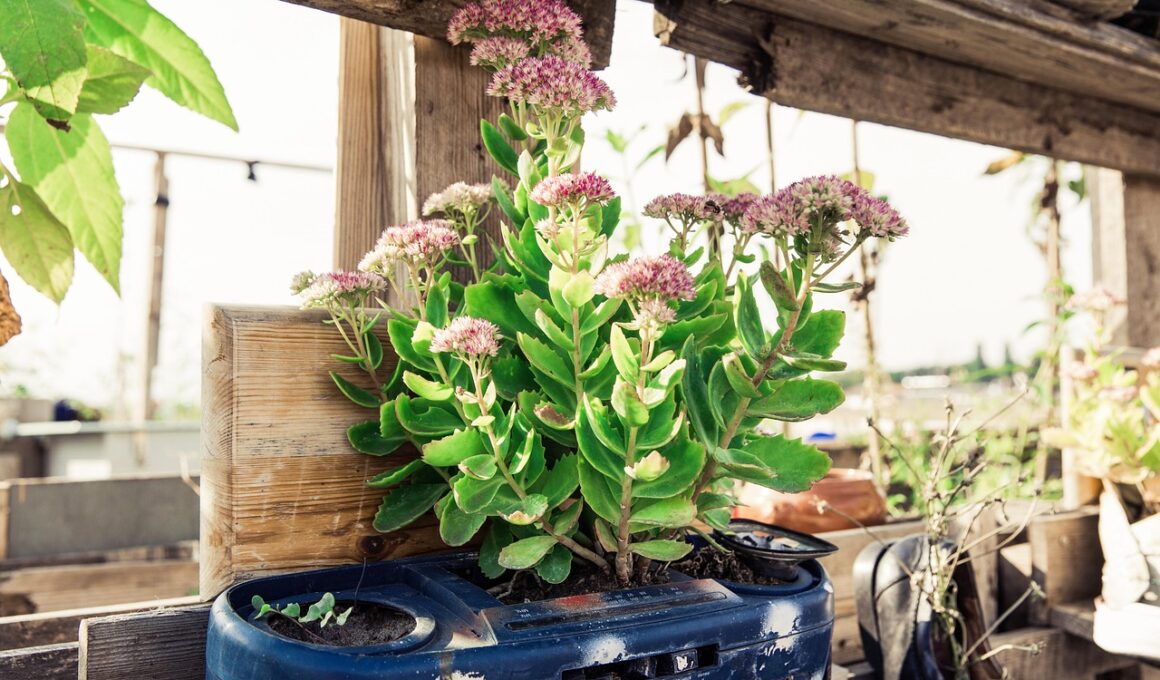Gardening as Exercise: How Urban Green Spaces Improve Cardiovascular Health
Urban gardening not only contributes to the beautification of neighborhoods but also offers significant health benefits, particularly for cardiovascular health. Engaging in gardening is a physical activity that involves various movements including digging, planting, weeding, and watering. These activities promote cardiovascular fitness by increasing heart rate and encouraging blood circulation, akin to traditional forms of exercise. Regular gardening sessions can serve as an enjoyable means to maintain physical health, allowing individuals to combine productivity with fitness. Furthermore, the repetitive motions involved in these tasks can help build muscle tone and improve overall strength. Additionally, gardening provides exposure to fresh air and sunlight, both known to enhance mood and reduce stress. According to health experts, engaging in physical activities such as gardening leads to a decrease in risk factors associated with heart disease, including elevated cholesterol and high blood pressure. This form of exercise is accessible to people of all ages and abilities, making it an inclusive option. Therefore, urban gardening emerges as a vibrant solution for both environmental improvement and personal wellness.
The Connection Between Nature and Fitness
The connection between nature and physical fitness is deeply rooted in psychological and physiological benefits. Studies indicate that interacting with green spaces can significantly enhance mental well-being and subsequently improve physical health. Urban gardens serve as essential spaces where community members can cultivate their own plants, fostering a sense of belonging and connection to nature. When people spend time gardening, they often experience reduced feelings of anxiety and depression. This aspect is particularly essential in urban settings, where individuals may frequently encounter stressors related to city life. The act of gardening often necessitates moderate physical exertion, promoting heart health through activities that can be sustained over longer periods, ultimately benefiting cardiovascular systems. Those who involve themselves in gardening not only engage in enjoyable physical activity but also foster healthier food choices, as they tend to consume more fruits and vegetables grown in their gardens. This leads to improved nutrition and correlating cardiovascular health benefits. Therefore, embracing urban gardening as a physical activity can support a holistic approach toward health, highlighting nature’s intrinsic role in nurturing physiological fitness.
Participating in urban gardening activities transforms the often sedentary lifestyle associated with city living into an active routine. Many urban dwellers experience limited access to direct nature experiences, yet cultivating plants can be a solution. The physical activity further contributes to building stamina and endurance, essential components of cardiovascular fitness. Gardeners often find joy in the process of growing plants, fostering a routine that encourages them to remain active. Tasks such as hoeing, planting seeds, and harvesting embody moderate-to-vigorous physical activities that can help improve heart function. Additionally, gardening activities can be tailored to suit individual fitness levels, making it a versatile option. Urban community gardens, specifically, create opportunities for social engagement in addition to physical activity, as residents come together to cultivate shared spaces. These interactions can result in improved accountability and motivation, leading gardeners to spend more time engaged in physically active pursuits overall. Thus, urban gardens not only provide fresh produce but also keep individuals moving, ultimately contributing to better heart health for participants of all ages and fitness levels.
Nutritional Benefits of Gardening
Gardening directly contributes to better nutritional choices, which is crucial for maintaining cardiovascular health. Individuals who grow their own fruits and vegetables are more likely to have access to a sustainable supply of fresh produce, promoting healthier eating habits. With immediate access to healthy options, it becomes easier to incorporate diverse nutrients into daily diets. Fruits and vegetables are rich in vitamins, antioxidants, and minerals, all pivotal in maintaining heart health. Moreover, homegrown produce is often free from harmful chemicals and pesticides found in store-bought varieties. The availability of fresh ingredients encourages culinary exploration, where gardeners can experiment with various recipes that prioritize healthy eating. This dietary shift aligns with various health guidelines that emphasize the importance of plant-based foods for reducing heart disease risks. Gardening also provides an opportunity to learn about food production processes, which fosters a deeper appreciation for nutrition. As new gardeners progress, they often become more invested in their health, further advancing their commitment to balanced eating. Thus, urban gardening transcends mere leisure, becoming a facilitator for improved nutrition and cardiovascular well-being.
Moreover, participating in urban gardens fosters a responsible relationship with local ecosystems, which can further influence cardiovascular health. This eco-conscious perspective promotes awareness of environmental factors and their impact on overall community well-being. By engaging in sustainable gardening practices, individuals contribute to local biodiversity, which has shown positive correlations with improved public health outcomes. Urban gardens help to mitigate air pollution, improve soil quality, and provide habitats for beneficial species. All of these factors converge to create a healthier environment, which ultimately contributes to residents’ cardiovascular fitness. Nature’s role in urban gardening cannot be overlooked; green spaces are known to provide mental rejuvenation that complements the physical exertion involved in gardening. When individuals prioritize nurturing their gardens, they also cultivate a sense of mindfulness, which is beneficial for emotional stability and physical health. Living harmoniously with nature encourages a balanced lifestyle, reducing stressors that contribute to heart disease. As urban gardening practices continue to evolve, their role in fostering community health, particularly cardiovascular wellness, remains indispensable to thriving urban ecosystems.
Community and Social Benefits
Urban gardening not only provides individual benefits but also strengthens community ties, which can further enhance cardiovascular health. Shared gardening spaces foster social cohesion among residents who would otherwise remain disconnected due to busy urban lifestyles. Collaborative gardening efforts encourage residents to work together toward common goals, promoting team-building and communication skills. These interpersonal interactions nurture friendships and reduce feelings of isolation, benefiting mental health in turn. Mental well-being consistently correlates with better physical health, creating a positive feedback loop. Projects like community gardens provide unique opportunities for public health education, attracting diverse participants and promoting awareness about sustainable living practices. These gardens often become focal points in neighborhoods, facilitating conversations surrounding wellness and nutrition. Urban gardening initiatives can also inspire community challenges or workshops, further enhancing engagement and motivation. As residents care for their gardens, they foster pride in their surroundings, which can translate to increased physical activity levels. Overall, the social fabric woven through community gardening helps create tight-knit neighborhoods that support each other’s health journeys, thus fostering a collective commitment to improved cardiovascular health.
In conclusion, urban gardening is a remarkable practice that simultaneously supports individual and community health, particularly in promoting cardiovascular fitness. Engaging in agricultural activities in urban settings encourages physical movement, contributing to heart health through enjoyable exercises. By cultivating plants, individuals improve their nutrition and reinforce positive lifestyle choices, crucial for reducing heart disease risk factors. The collaborative nature of gardening brings people together, fostering social connections that significantly impact emotional wellness, thus further contributing to physical health. As urban areas continue to expand, integrating more green spaces through gardening initiatives presents an opportunity to enhance the quality of life for residents. The multifaceted benefits of urban gardening extend beyond mere aesthetics, encouraging healthier habits, improving community bonds, and promoting a harmonious relationship with nature. Sustainability in gardening practices inspires a broader dialogue about health, wellness, and ecology, positioning urban gardening as an essential component of contemporary urban living. As we move towards more sustainable futures, embracing urban gardening will become crucial for both individual cardiovascular health and the overall well-being of urban communities.



